Medical practices have a responsibility to regulate and monitor compliance among staff.
Issues can arise in patient care and administration. However, with an efficient compliance plan, your practice can be proactive and address potential problems quickly.
Education and training
Educating and training staff to regulate compliance is essential to a cohesive compliance plan. The main objectives include ensuring each employee understands compliance practices and how failure to comply can affect employment.
Monitoring compliance
You can designate a compliance officer to audit and monitor your plan. Outline your monitoring guidelines and ensure you are up-to-date on changes within federal programs. Additionally, you may benefit from conducting these audits at least once per year.
Communication
Help establish relationships between administrative staff and medical personnel to foster collaboration. Opening the lines of communication in your office creates a workplace culture that makes medical staff and other personnel feel comfortable discussing possible compliance issues. You can also establish a way for employees to report issues anonymously.
Enforcing discipline
It is important for your staff to understand the disciplinary action they may face for noncompliance. Include an element in your employee handbook about the discipline you will enforce in the event of a compliance issue. Some disciplinary actions you may invoke include:
- Giving a formal warning
- Placing an employee on probation
- Enforcing suspension for continued violations
- Applying a demotion
Even with your best efforts, you cannot monitor or control all the actions of your staff. However, creating an environment where employees feel like a family helps garner a sense of collective responsibility.

